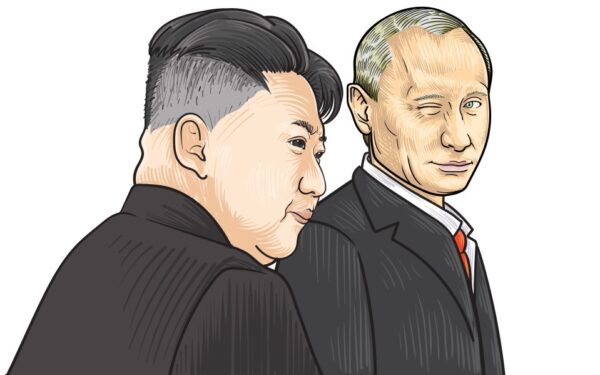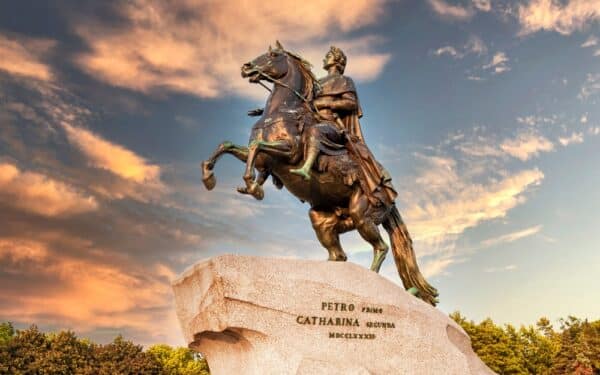In an election speech on national security on 3 June, Sir Keir Starmer said that “the postwar era is over”. Lewis Baston’s new book Borderlines: A History of Europe Told From The Edges serves to remind us that not even the post-First World War era has ended let alone any consequent war eras. Borders across Europe tell stories that still resonate, some painfully so. Wars have left many ragged and contested edges which are not easily fixed or settled. Some political leaders across the continent are intent on resetting them. Meanwhile, people from beyond the continent are determined to cross borders into Europe whilst governments in the region are set upon stopping many of them from doing so.
The past, that foreign country, haunts Borderlines in often surprising and unexpected ways. We explore quirky curiosities such as the towns overlapping the Belgian/Dutch border. The town of Baarle, for example, chooses the best national regulations for their local needs. It highlights boundaries as distinct local areas caught in aspic as in the cross-plying intersections of north-east France, south-west Germany and Switzerland around Basle or at the Italian/Swiss border around Lugano where gambling and tax evasion have left their marks.
But the further east Baston takes the reader, the less quirky the edges appear. Instead, they gradually become more serious and grave: “Old boundaries layer over each other like scar tissue”. For Putin, the postwar territorial order isn’t settled and is to be revisited and revoked in Ukraine and challenged elsewhere along the contours of Russia’s former Tsarist and Soviet empires. And even within the EU, Putin has some willing helpers opportunistically seeking possible territorial adjustments, most conspicuously in Hungary.
Baston has crafted a vivid, deeply researched and fascinating story but an unavoidably selective one. The oddities and curiosities in Western Europe aside, his account is largely focused on Central and Eastern Europe and especially on the borderlines of the countries of the ex-Soviet imperium. Given the profusion of ethnic and other divisions in the Balkans, which in the Nineties saw one of Europe’s most interesting and severe border changes in history with the breakup of Yugoslavia, it is somewhat odd that Baston has little to say about that region.
What Borderlines has a lot to say about is the impact of the collapse of earlier empires in Europe and, especially, of Austria-Hungary. He shows many times that the unwinding of Austria-Hungary is still ongoing in Central and Eastern Europe and Baston’s analysis of these long, drawn-out effects from Slovakia via Hungary and Poland to Ukraine is at the heart of his book. He repeatedly shows how a world was lost after the disintegration of Austria-Hungary at the end of the First World War. In place of an empire notably tolerant of ethnic and religious diversity, the political leftovers fuelled nationalism and ethnic conflicts on which Nazism and Soviet communism built their deadly regimes.
I recall in 1992 visiting the Speaker of the Hungarian parliament in his offices in the splendid gothic building on the banks of the Danube and almost immediately having my attention drawn to a large map on the wall. This highlighted the contrast between the borders of Hungary past and present and drew attention to the numbers of Magyars or ethnic Hungarians displaced by interwar treaties and “required” to live in neighbouring countries beyond, as it were, the national pale. Then, as now, Hungary’s governing politicians perceived the rightful boundaries of their country to be defined by ethnicity rather than geography and civic rights. Others in Central Europe have taken a different path.
Baston draws this out well as he contrasts the irredentist tendencies of Orban’s Hungary with the sometimes uneasy but real reconciliations between others in the region affected by post-1945 territorial changes. Most conspicuously Germany and Poland have come to terms with major territorial adjustments forced upon them. So too and despite equally painful historical experiences have Poland and Ukraine. It is Hungary that nibbles still at the post-war order and gives comfort to Putin’s Russia and does so not just to protect cheap energy supplies but for its own underlying political goals. And although Hungary seeks only to nibble, Putin bites with bared teeth.
Whilst Baston’s journeyings across Central Europe frequently evoke nostalgia for happier times under Franz-Josef’s rule from Vienna, it is the EU that is cited many times as a kind of contemporary counterpoint. Many of those Baston meets across the eastern borderlines of the former Soviet Union aspire implicitly to a kind of re-worked Austria-Hungary, a pluralistic, international legal order with free movement of people. Even in Kaliningrad, that odd bit of Russia wedged between the Baltic, Lithuania and Poland, those living there who retain Lithuanian citizenship treasure it for the ability to access and travel through the Schengen area.
This raises the main curiosity of this book for a reader in the UK: its comparative silence on the effect of Brexit on the free movement of British citizens across Europe. There is some mention of the EU/UK border on the island of Ireland but there is little or no commentary on the impact of reimposed borders for travel across the Channel and North Sea between Britain and the European Union. Perhaps, Baston suggests, only an island state – and one uninvaded since the 11th century – could contemplate re-establishing in contemporary Europe a barrier to easy trade and communication. Borders may seem less arbitrary when geographically imposed by water and unchanged for millennia. Certainly, from the viewpoint of some people in non-EU countries on the peripheral borderlines of the continent who pine for free movement, it is a mystifying development.
Borderlines: A History of Europe, Told From the Edges by Lewis Baston (Hodder & Stoughton, 336pp; £25)
Write to us with your comments to be considered for publication at letters@reaction.life




